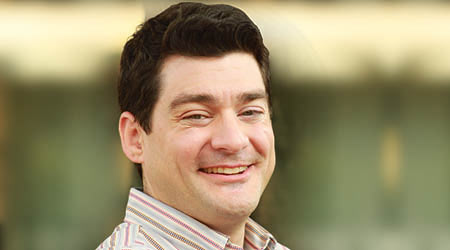
How is professional cleaning like CrossFit? Aside from “both beginning with a C” or “they’re both a lot of hard work,” I’ll admit it sounds like the start of a bad riddle. But the correlation actually makes sense when you consider how peer training can benefit a successful green cleaning program.
Most Saturday mornings I grab the kids, hit the farmers market, and then head to my CrossFit gym (they watch and play while the parents sweat) for a group workout. We assemble into teams of two to four and look over the morning workout that usually has a lot of zeros for the repetitions of each movement (e.g., 400 jump ropes, 300 mountain climbers, row 1,000 meters). Completing these group workouts usually involves one of two “divide and conquer” approaches: splitting up the reps equally among team members, or letting each team member tackle the movements where they excel.
As I watch my peers go through the workout, I almost always learn something that improves my own performance. It may be something as simple as a different grip on a bar, or it could be trying an entirely new movement. I might have done an exercise hundreds of times, but every new pointer means I can do it a little bit better. With new movements, I do listen to the coach’s instruction, but watching other people helps to reinforce what I should be doing.
Coaches (or supervisors in the case of cleaning staff) have a critical role to play by ensuring that proper equipment and ergonomics are in place, which will avoid injury and improve efficiency. Sometimes, though, the messaging from a supervisor may get lost due to differences between teaching styles and staff learning styles. Learning different techniques from the same person may not be as effective as learning/reinforcing those same processes from a variety of people.
While there are those tasks from which there is no escape — and nobody really enjoys doing (the cleaning equivalent of burpees) — for many cleaning tasks, you probably have someone on staff that comes to mind as a top performer. We all take pride in what we’re good at doing, so it makes sense to let your staff shine and share their knowledge and skill if they can rock a restroom or leave a wall of windows streak-free.
Learning from peers can be a valuable addition to your staff training and a fresh way to convey a technique from someone that does it correctly, and does it well. Staff members may also be more comfortable asking questions of a peer if they don’t fully grasp the process or demonstration. I have been on numerous facility tours where the cleaning staff gets to present their green cleaning program in their own words and it makes for a powerful presentation.
One last bonus: Learning from a peer might positively influence the Sinatra’s (“I do it my way”) on your staff. All too often, we still run into cleaning staffs that have done something a certain way for a long time and may be resistant to change to greener options. However, if watching a peer do it quicker or with less effort can help convey a way to do it “better,” rather than “greener,” it just might get through.
MARK PETRUZZI is Senior Vice President of Outreach and Strategic Relations with Green Seal. He’s in his third decade of striving for more sustainable purchasing and operations by using his engineering powers for good.

 The Down and Dirty on Cleaning in Virus Season
The Down and Dirty on Cleaning in Virus Season How Surfactant Use is Expanding in Commercial Cleaning
How Surfactant Use is Expanding in Commercial Cleaning Clean Buildings Conference
Clean Buildings Conference
